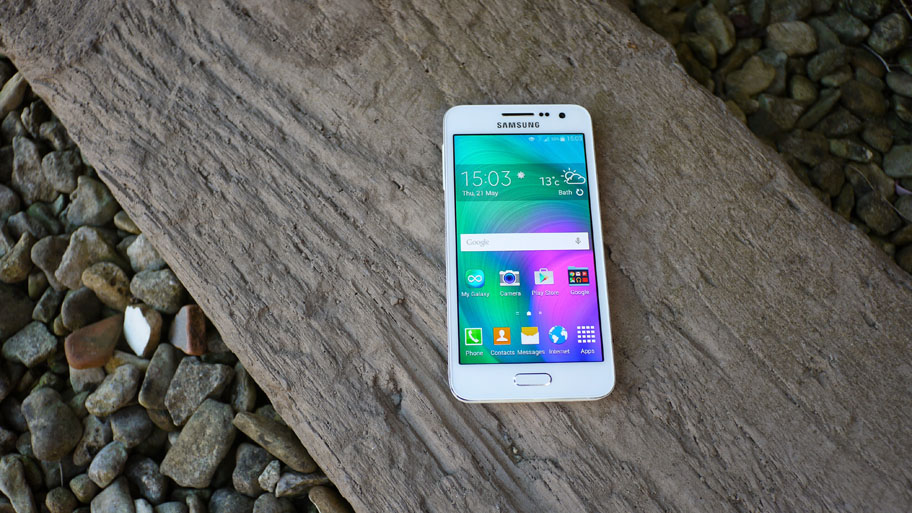Why you can trust TechRadar
Design and build quality are the Galaxy A3's biggest strengths and probably the two main features that differentiate it from other affordable smartphones. The vibrant 4.5-inch Super AMOLED display is also a highlight, despite only featuring qHD resolution, with fantastic viewing angles and contrast.
That being said, these features have already been discussed at large in the first section of the review and there are a number of other key features which are certainly noteworthy.
Samsung has included numerous software enhancements for the Galaxy A3's 5MP front-facing camera, with the Korean firm looking to target social networking enthusiasts.
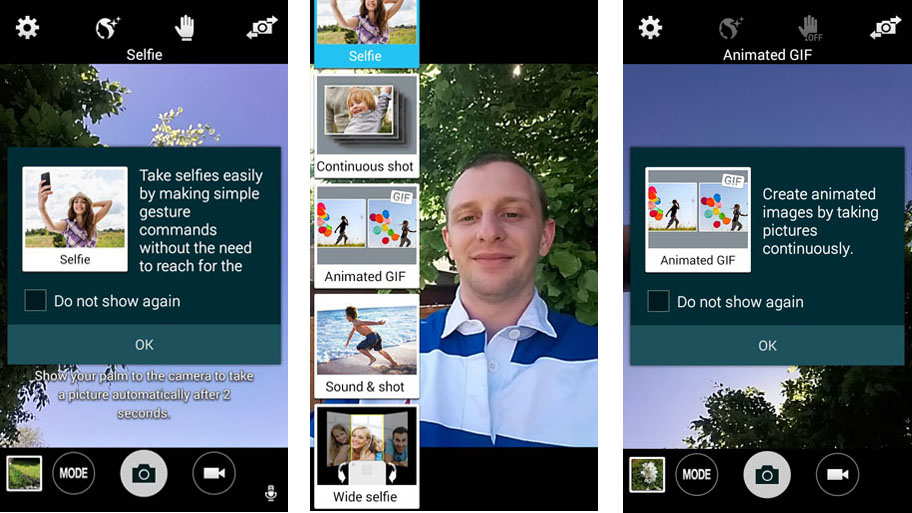
Five shooting modes are accessible from within the camera app while using the A3's front-facing camera. The usual Samsung offerings such as Continuous Shot and Sound & Shot are present, and work as well as you'd expect them to.
The 'Animated GIF' mode is a little gimmicky but fun nevertheless, allowing the user to continuously shoot up to 20 photos and combine them together to make a moving image.
Selfie lovers will appreciate the inclusion of a Wide Selfie option, but the mode does take some time to master. Like the panorama shooting mode on most smartphone cameras, Wide Selfie works by merging three photos together, in order to create a wider shot.
Swivelling the Galaxy A3 to the correct grid positions either side of the central image can be extremely tricky, especially if you don't have a very steady hand, and I'd say around half of my attempts ended in errors. Yet when you do manage to get it right, results look excellent and the mode is definitely worth persevering with if you enjoy the occasional group selfie.
You have the power
Samsung's much admired Ultra Power Saving Mode, present on the more expensive Galaxy Note 4 and Galaxy Alpha, is also available on the Galaxy A3.
Despite the Galaxy A3 only packing a small qHD display and a frugal processing package, there may be times where you find yourself in the red and needing to conserve power. Ultra Power Saving Mode saves large amounts of juice by applying a simplified greyscale theme and limiting the majority of smartphone functions.
Core apps (phone, messages, email and internet) still function perfectly well and while this battery-saving mode will not be needed on a daily basis, it is a reassuring and possibly crucial feature.
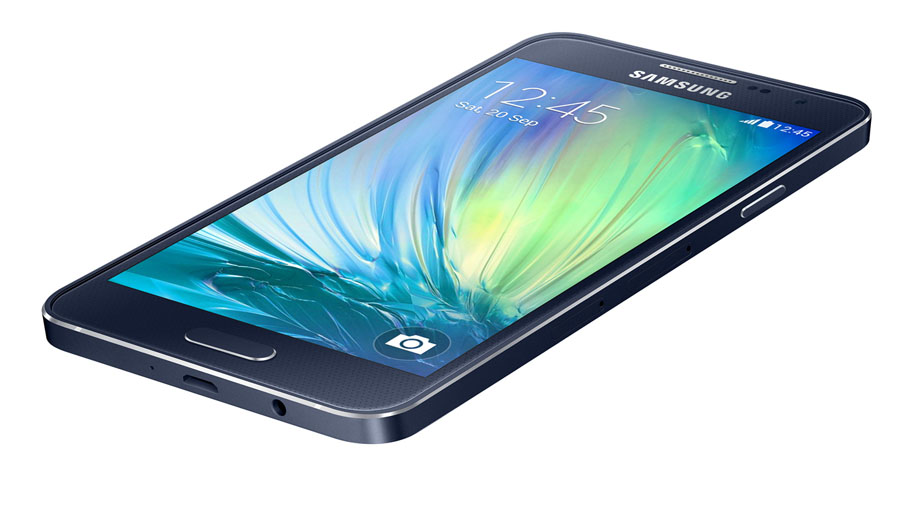
Ultra Power Saving mode has often been buried deep in the settings menu of Samsung's very bloated (and at times frustrating) TouchWiz UI. Thankfully the Korean giant now seems to have learned that sometimes less is more.
The Galaxy A3 comes equipped with Samsung's new and improved TouchWiz UI, running above Android 4.4.4 KitKat. Although it doesn't currently feature the Lollipop material design tweaks, such as those found on the Galaxy S6, the UI does look and feel far more refined than previous iterations.
Yes the cartoonish app icons are still present, though slightly flatter-looking, but the overall interface is less cluttered and in-your-face than before.
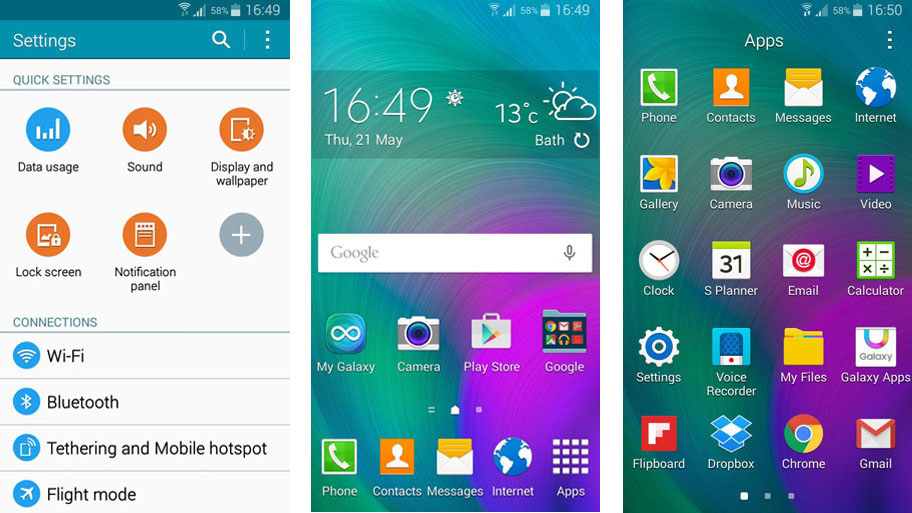
Homescreens are rather minimal by Samsung's standards, with stock widgets, such as weather, employing a thin and semi-transparent design. Flipboard briefing makes an appearance to the left of the main homescreen but unfortunately suffers from the same lag that plagued the previous My Magazines feature. Thankfully it can easily be disabled from the homescreens settings menu.
Lag and stutter are now non-existent in the app drawer and useful options such as Create folder and Hide Apps remain accessible in the top right-hand corner.
That being said, you probably won't need to hide many apps, as Samsung have at last removed the majority of bloatware. The likes of Chat On and Samsung Hub are now distant memories, although the much maligned S Voice app is still hanging on in there.
App happy
Samsung smartphones have always offered a decent number of pre-installed Google apps and the Galaxy A3 is no exception. Other than Google Keep and Calendar, which have stock alternatives, nearly all of the essentials are here including Play Store, Play Music, Maps, Gmail and of course Chrome.
This is definitely an area where the Galaxy A3 has an advantage over some of the competing smartphones from neighbouring China, as trying to get Google services working perfectly on an import device can be a bit of a challenge.
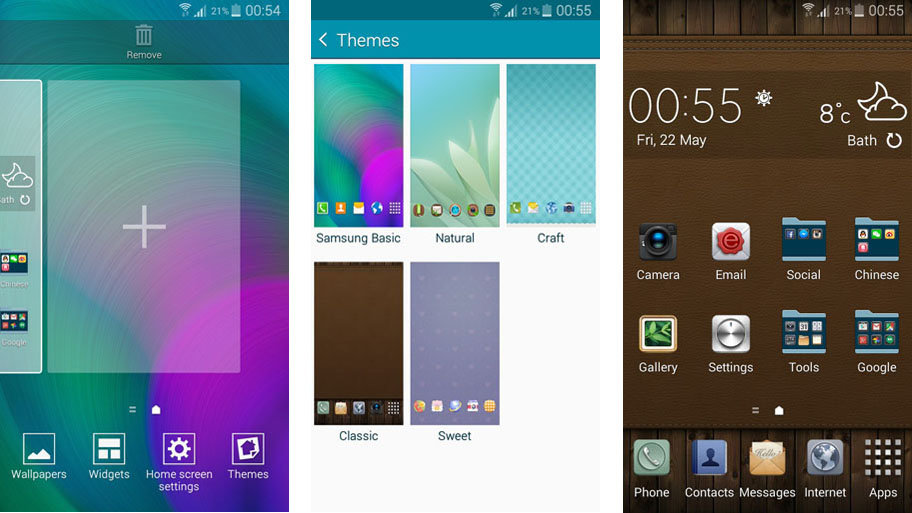
However, Chinese devices tend to offer a great deal of customisation, which is a major pull for many users. The Galaxy A3 is one of the first Samsung smartphones to come with theme options, and it's a welcome advance.
The implementation is somewhat primitive, with only five default themes to choose from. Only the icon and wallpaper style can be changed and there's no option to mix and match elements from different themes. I'm sure more themes and functionality will arrive in due course, but as of now it makes for rather poor viewing.
Personal choice
What Samsung lacks in the theme department, it makes up for with other personalisation options. Easy Mode can be activated in the settings menu to simplify the homescreen layout and present selected apps in a clearer format – a potentially handy feature for first-time smartphone users.
A newly launched Private Mode is also available within the Galaxy A3's settings, allowing users to keep content (in the Gallery, Video, Music, Voice Recorder and My Files apps) hidden and secure.
Like the majority of other Samsung smartphones currently on the market, Motions and Gestures is included on the Galaxy A3, but unfortunately there's no double tap to wake or screen off gestures such as those found on the LG G4 and OnePlus One. Arguably the only gesture I feel inclined to use on the Galaxy A3 is flipping the phone over to Mute/Pause, as the Smart Alert and Palm Swipe to Capture functions seem rather trivial.
Current page: Key features and interface
Prev Page Introduction and design Next Page Performance and battery